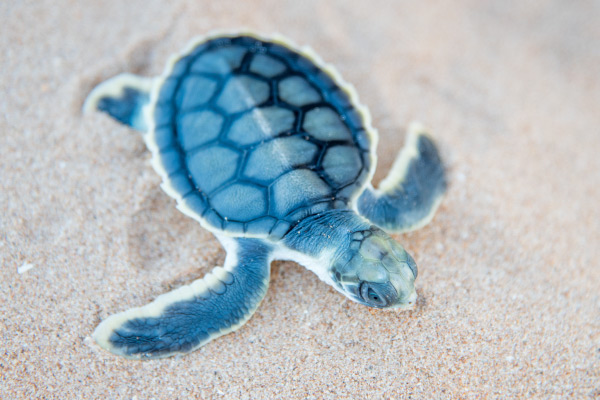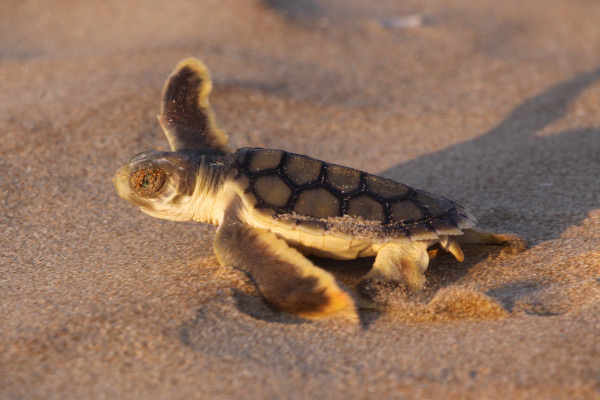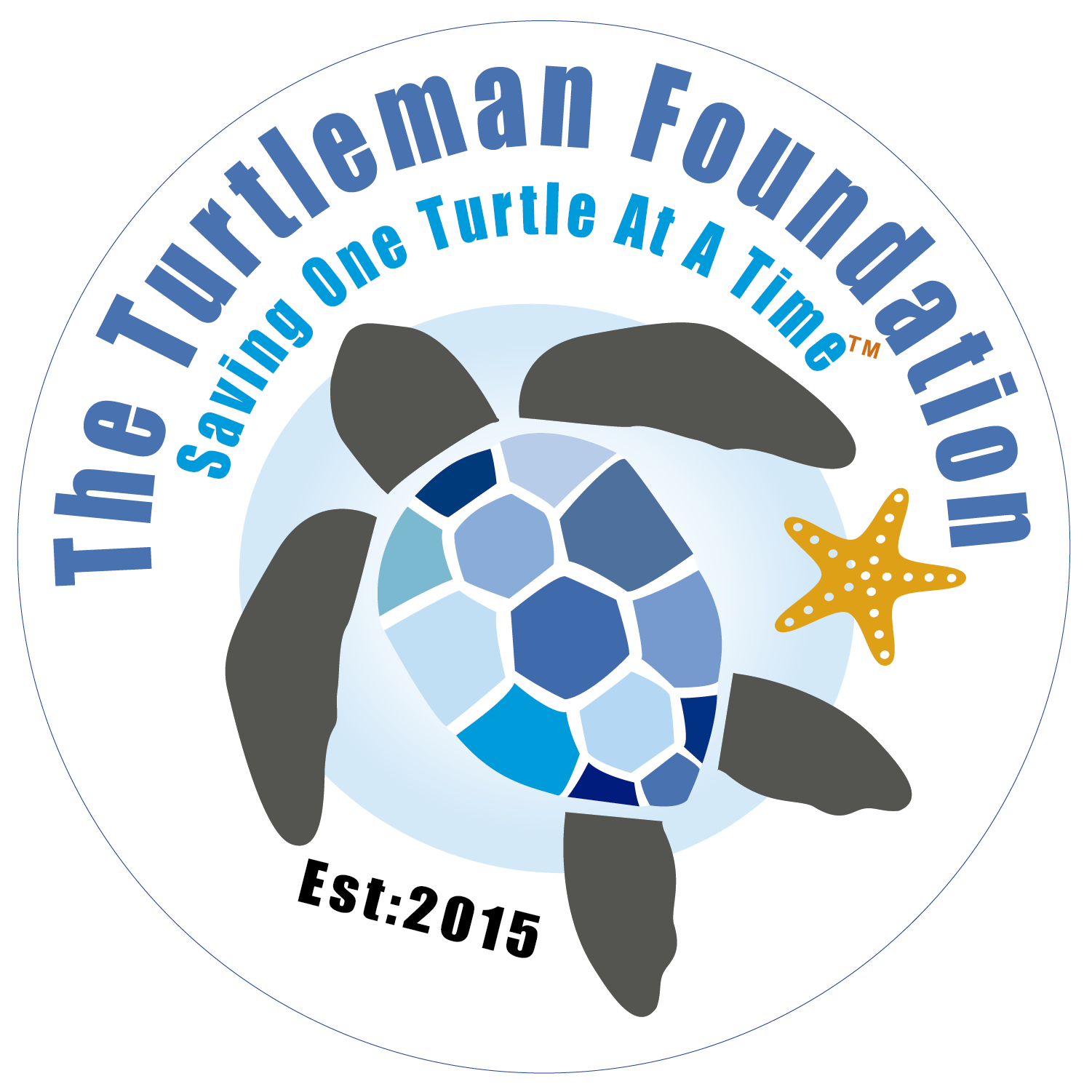FLATBACK
The flatback is the least studied of the sea turtles and has one of the smallest geographic ranges. The only endemic sea turtle species, flatbacks nest solely along the northern coast of Australia, and live solely on the continental shelf between Australia, southern Indonesia, and Papua New Guinea.


SCIENTIFIC NAME
Capitalize Natator depressus
STATUS
Data Deficient (Conservation Status Unknown)
DISTRIBUTION
- Nesting only on northern coast of Australia
- All life stages occur on continental shelf north of Australian continent.
SIZE
ADULT
- Length 2.5-3 Ft
- Weight 220 Pds
HATCHLING
- Length 4.5 cm
- Weight 1.5 oz
DIET
For all life stages, mostly benthic invertebrates (crabs, other crustaceans, and mollusks) and sometimes jellies
REPRODUCTION
- Reproduce every 2-4 years
- Lay 2-3 clutches of eggs per season
- Lay 50-70 eggs per clutch
- Billiard ball size eggs weigh 70-80 grams
- Incubation period approximately 60 days long
FACTS
- For a long time, flatbacks were thought to be a type of green turtle, but were finally described as a separate species in 1988.
- Flatbacks have the largest eggs and hatchlings relative to their adult body size of all sea turtles.
- Flatbacks have a unique physiology that allows them to stay active underwater for longer periods than most other species.
- Over much of their nesting range they are Hunted by saltwater crocodiles, which have also been know to attack human beings. Because of this, there are virtually no underwater photos of adults taken in the wild.
FLATBACK TURTLE FACTS
Flatback turtle facts:
- Flatback turtles live in the coastal waters of Australia and Papua New Guinea.
- Flatback turtles primarily eat soft-bodied prey, such as jellyfish,
- sea cucumbers and soft corals.
- Female flatback turtles nest on Australian beaches only. During the nesting season, flatbacks lay two to three clutches, each containing about 50 eggs.1

